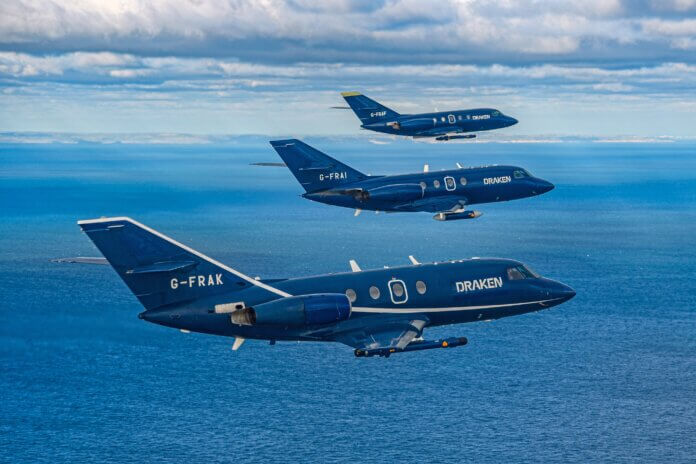
In the North Atlantic Treaty Organisation’s (NATO’s) own words, Ramstein Guard is an annual exercise “designed to improve the effectiveness and capability of NATO Integrated Air and Missile Defence System (NATINAMDS) forces.”
This year’s exercise took place in northern Europe’s Baltic region. Choosing this area is by no means accidental. The Baltic nations of Estonia, Latvia and Lithuania, together with new NATO entrants Finland and Sweden, and long-time member Norway, all share close proximity with Russia. NATO’s relations with an increasingly aggressive Russia, as shown by the latter’s actions in Ukraine, remain tense.
NATO’s Electronic Warfare Force Integration Programme, better known as NEWFIP, is a training component for exercises like Ramstein Guard. The alliance told Armada via a written statement that NEWFIP is “for selected nations to train and maintain a minimum level of EW proficiency.” NEWFIP efforts are not confined to the air domain. The alliance statement continued that at least three exercises per year incorporate EW assets and are coordinated by the NEWFIP. NATO’s Dynamic Guard maritime exercise hosted by Norway in February also included an NEWFIP component.
The key role of NEWFIP, and the programme’s participation in NATO exercises, is to hone the effectiveness and capability of forces like NATINAMDS units “to operate effectively in a hostile EW environment.” Russia’s armed forces have shown in the Ukrainian and Syrian theatres that they take EW seriously and work hard to restrict access to the electromagnetic spectrum.
The NEWFIP takes a scalable, graduated approach to EW training starting “with a basic approach to ensure the effective training of all operators on the ground and in the air,” the statement articulated. “The complexity can be increased to take all operators to a higher level.” NATO is keen to emphasise that the NEWFIP component of Ramstein Guard is not intended to be a test or evaluation. Instead, this component “is tailored training in the EW environment.”
Purpose
Ramstein Guard employed EW training for two purposes: The first was to ensure that command and control could be maintained between participating assets. The speed of air combat, coupled with the vast distances over which it usually occurs, makes robust communications essential, particularly for air defence. The Russian Army uses systems such as the R-934B, 1L269 Krasukha-2.0 and 1RL257 Krasukha-C4. The R-934B is a ground-based electronic attack system directed against airborne radios using frequencies of 20 megahertz to two gigahertz/GHz.
Air defence also relies on ensuring that the Recognised Air Picture (RAP) relied upon by NATO air defenders is as comprehensive as possible. Together, the 1L269 and 1RL257 jam airborne radars across frequencies of one gigahertz to 18GHz. Ensuring the resilience of NATO communications and airborne radars in the face of such threats is imperative. “This exercise focuses on the employment of defensive self-protection measures to overcome interference that would impact the alliance’s ability to conduct the tracking operations necessary to maintain a RAP.”
The NEWFIP is subordinate to NATO’s Allied Air Command based at Ramstein airbase, western Germany. The alliance’s Combined Air Operations Centres in Uedem, western Germany and Torrejón, central Spain are responsible for conducting the air exercises. Alongside the NEWFIP, the statement said NATO’s Joint Electronic Warfare Core Staff (JEWCS) “provides NATO commands and allied forces with EW expertise, support and training … for operations and exercises.”
Ramstein Guard shows that NATO is continually refining its EW skills in the air domain, as well as the maritime, land and space environments. With alliance members facing the threat of Russian aggression, initiatives like NEWFIP make an important contribution to help ensure alliance spectrum resilience.
by Dr. Thomas Withington












